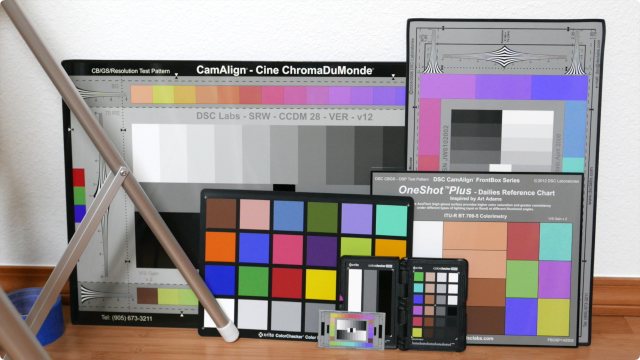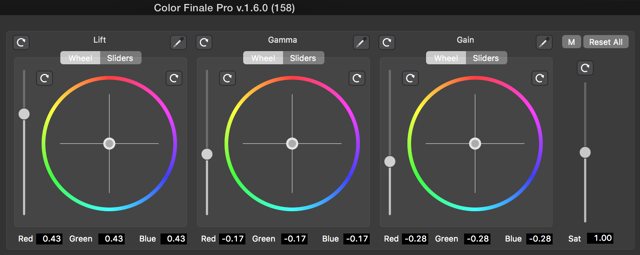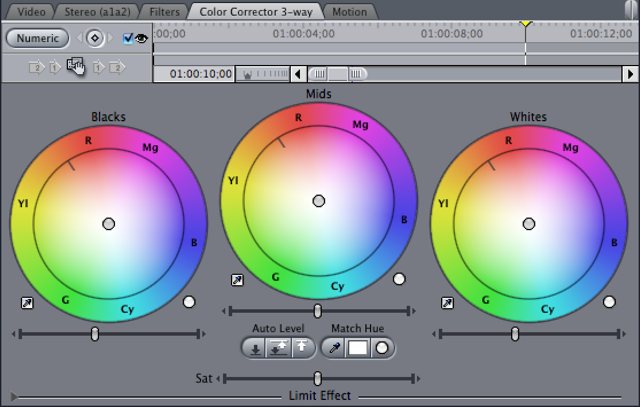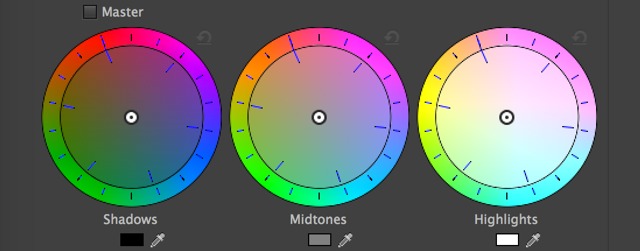I did a webinar on using test charts in production for Moviola in October 2016. Here are the links, notes, clarifications, and corrections for that webinar.

Updates / Corrections / Clarifications
On the same day that I submitted the finished webinar, the Color Finale plugin for FCPX was updated to version 1.6, which adds eyedropper controls for one-click black-, midtone-, and white-balancing:

So now, even Color Finale can party like it’s 1999!


If you have eyedropper controls and a gray card, white card, or 3-step (or more) grayscale, you can get most of the benefits of an auto-grading or auto-matching function with just a few clicks. Silly of me not to have demonstrated that in the webinar using FCP Classic or Premiere Pro!
I mentioned the fleshtone line “at 10:30” on the vectorscoope. Really, it’s closer to the 11 o’clock position.
I suggested that traditional chip charts have a brighter-than-18%-gray background due to the surround effect. David Corley, founder of DSC Labs, writes about a more direct, less abstract reason: “In the early days, using tube color cameras, Average Picture Level (APL) was more important than today and the powers that be said that the APL of color/grayscale test charts should be at APL of a typical scene, which was significantly higher than 18%.”
Charts I Used, Mentioned, or Showed Images Of
DSC Labs makes the de facto standard calibration charts for television camera setup and evaluation purposes (disclosure: I’ve worked trade shows for DSC, I’m friends with the owners, and DSC sometimes send me charts for testing—which I use alongside the DSC charts that I’ve bought). The ChromaDuMonde 24+4 is the canonical studio/multicam chip chart, but it’s a bit spendy and it’s arguably overkill for a lot of single-cam field work, so I recommend the OneShot Plus as a good choice for field use. I like the larger Front Box size as it can be used farther from the lens while still showing chips large enough for easy measurement, but the smaller Handy size is a bit more compact and cheaper, too.
I used the Cine ChromaDuMonde chart in many of my tests; it’s essentially a CDM 24+4 with a log ramp and an 18% reference added The color chips are arrayed in two rows instead of surrounding the grayscale, but the vectorscope display is the same.
All the DSC charts are designed with calibrated WFM/vectorscope target levels.
X-Rite makes the widely-used ColorChecker (a.k.a. Macbeth, a.k.a. “the Scottish chart”) as well as the ColorChecker Video and Video Passport charts (as well as a bunch of charts aimed at still photographers). The Video Passport is another good choice for field work, and it’s the only chart currently supported by Color Finale’s auto-match function, though its colors aren’t useful for vectorscope display and measurement.
Gamma & Density Co. makes the Log Chart and the Gamma-709 chart. As of 11 October 2016 the Log Chart is on sale for $150 (normally $300). The Log Chart and its accessory strips are reportedly widespread in Hollywood. I haven’t used them myself. The Log Chart’s color strip is designed for vectorscope display and measurement.
Vertex Video makes the Accu-Chart series, about which I know very little aside from having seen their 11-step grayscales at a couple of TV Stations. They’re quite affordable by chart standards.
Kodak makes gray cards as does Delta.
Colorbar and Siemens star iPhone charts are part of the MovieSlate app.
I used a picture of the Century Precision Optics Lens Chart from Filmtools.
The “Indian Head” chart images are from Wikipedia. as was the picture of an RCA TK-41C camera.
Chart Sources
Filmtools carries a good variety of chip charts, resolution charts, and lens-testing charts (Filmtools and PVC are both part of the Moviola empire).
Abel Cine has their own line of lens-testing and resolution charts, and they stock a fair number of other charts, too.
And it’s worth checking B&H Photo/Video and Adorama too.
Etc.
The short clip of the hand-cranked movie camera is from With Art Adams on “The Canyon”.
The side-by-side image and waveform monitor with exposure information is a screen capture from my app Cine Meter II.
Location shots of ChromaDuMondes from the photo gallery on the DSC Labs website, used with permission.
Disclosure: The Cine ChromaDuMonde and OneShot Plus were sent to me by DSC Labs in 2013 and 2014; the MegaTrumpet resolution chart is a prototype given to me at NAB several years ago when I bought another chart. The tiny CDM chart held by the stuffed rabbit also came as a bonus with the purchase of a different chart (it was left over, apparently, from a custom run for a particular aerospace company). All other charts I bought myself. DSC Labs did not offer any support for this webinar (nor did I ask for any) and no vendor offered any special consideration or compensation in return for my showing off their charts.
Any opinions expressed are mine alone, based on my own experience and testing, and do not reflect the opinions of Filmtools, PVC, DSC Labs, X-Rite, Gamma & Density, or anyone else. If you disagree with my opinions, please say so in the comments, and say why: there’s plenty of room for discussion and learning.

